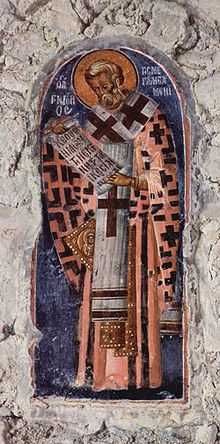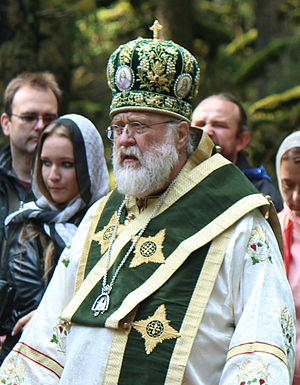| Part of a series on the |
| Eastern Orthodox Church |
|---|
| Overview |


In the Eastern Orthodox and Eastern Catholic liturgical tradition, the omophorion (‹See Tfd›Greek: ὠμοφόριον, meaning "[something] borne on the shoulders"; Slavonic: омофоръ, omofor) is the distinguishing vestment of a bishop and the symbol of his spiritual and ecclesiastical authority. Originally woven of wool, it is a band of brocade decorated with four crosses and an eight-pointed star; it is worn about the neck and shoulders.[1]
By symbolizing the lost sheep that is found and carried on the Good Shepherd's shoulders, it signifies the bishop's pastoral role as the icon of Christ. All Eastern Orthodox bishops wear the omophorion. Clergy and ecclesiastical institutions, including seminaries, subject to a bishop's authority are often said to be "under his omophorion" (see Ecclesiastical jurisdiction).
The equivalent vestment in Western Christian usage is the archiepiscopal pallium, the use of which is subject to different rubrics and restrictions.
- ^ St Vladimir's Seminary Archived September 26, 2007, at the Wayback Machine